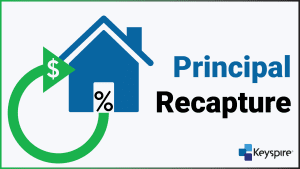Attract Higher Paying Tenants by Being Pet Friendly!

Optimizing an investment property is all about maximizing your income and minimizing your workload and expenses, such as tenant turnover.
This blog focuses on a specific way you can optimize that many investors are reluctant to do.
I don’t want to spoil it before you watch the video, but here’s a clue: There is a lot of furry cuteness in this video 🙂
Check out a transcript of this video below:
You have an investment property, but to make that investment pay, you need tenants, responsible tenants who will treat your property as their home. What’s more you want tenants who will want to stay beyond the initial lease, saving you the hassles of tenant turnover. You also want tenants who are willing to pay higher rents to increase your cash flow.
And overall, R O I. Today I want to talk about one way to attract these tenants and set yourself apart from other landlords that may just surprise you. Consider being pet friendly. While the exact numbers vary from survey to survey, 49 to 68% of American households own pets. This includes all animals, not just cats and dogs.
The Canadian Animal Health Institute’s 2020 report put ownership of cats and dogs at 58% of households. By discriminating against pet owners, you could be alienating over half of your potential customer base. Tenants with pets often have fewer rental options, so they’re willing to pay more and are more likely to stay in your unit longer for the sake of their pets.
Most pet owners think of their pets as a member of the family, and they want the very best for them. This is an opportunity for you to add value. Now, depending on the province or state you are in, you may not be able to prohibit pets based on regulations, so you’ll have to accept them anyway. If a tenant has a service animal or emotional support animal, then typically landlords must allow that animal on the property so long as it’s a reasonable accommodation.
But if you can ban pets from your units, you may be tempted to fearing the property damage, bad odors, and complaints from neighbors, especially if those neighbors are also your tenants. Like any damage caused by tenants, there are regulations and landlord tenant laws to help mitigate the risk. Some states and or provinces allow damage deposits.
Many have processes for claiming pet damages. Some allow pet deposits or pet rent fees if you have a condo, regulations may be in place to limit or prohibit pets. When renovating and preparing your property for rent, choose finishes that are durable and pet or child-friendly. Beyond that, this is a matter of tenant screening and tenant management, and it’s best to think of the pet like you would another person living in the rental property.
In fact, some Keyspire members have charged additional rent for the pet to stay in their unit like they would a roommate or long-term guest. Check your local regulations to see if this is allowed where you are. When screening potential tenants with pets meet the pets beforehand, preferably at their existing home.
This will give you a reasonable idea of how you can expect the animal to behave in your property. Ask references about the pet and ask your prospective tenant the following questions when you’re screening them. How many pets do you own? What is the pet’s breed and size? How old is the pet? How long have you owned the pet?
Have you ever been in a situation where your animal has acted out of aggression towards anyone or any other animal? Are you solely responsible for the pet? Is the pet trained? Is the pet updated on their vaccines? Does the pet get along with other people, other animals and children? Consider your property’s tenant profile and how the tenants will interact.
Be transparent if other units have pets, and consider if this type of pet is a good fit for your unit. For example, large dogs may be uncomfortable and restless in attic units, and if there isn’t sound separation between your units, your lower tenants will also get to enjoy hearing them through the ceiling all the time.
If you choose to rent to this tenant and their pets, consider the following. When signing the lease and handing over the keys, do a tenant walkthrough video with the tenant to document the condition of the property along with a written inspection form. When the tenant moves in. Clearly set expectations with the tenant beforehand.
Sometimes you can add an addendum to the leases that outlines pet rules and have a tenant sign. Consider the pet when preparing your welcome package. Include numbers for local emergency veterinary clinics or pet care services. With the usual contact numbers you would give. Perhaps a neighborhood map including nearby parks would be helpful.
Include a treat for the pet with your tenant welcome gift. Remember, adding value to the pet means adding value to the human tenants too. Once the family is moved in, conduct regular property inspections to ensure the property condition is maintained. You should be doing this, even if pets are not a factor.
If there are any problems, deal with them immediately. Waiting can often make things worse. As a landlord, you provide a safe and comfortable home to live in, and pets need homes too by following many of the same processes you would with any other kind of tenant. Renting to pet owners can be an excellent way to take checks to the bank.
Recent Blogs
The Best Time To “Cash Out” Is…
“When should I ‘cash out’ and sell my properties?” I hear this question a lot and it blows my…
The 7-Step JV Process
“It’s better to own 10% of 100 properties than 100% of 1 property.” No matter how wealthy and successful…
Income Vs Net Worth
In today’s world, two of the most important financial metrics are income and net worth. Understanding the distinction between the…
Principal Recapture Explained
Principal recapture is a financial concept used to describe the sum of all the principal payments on your mortgage for…




